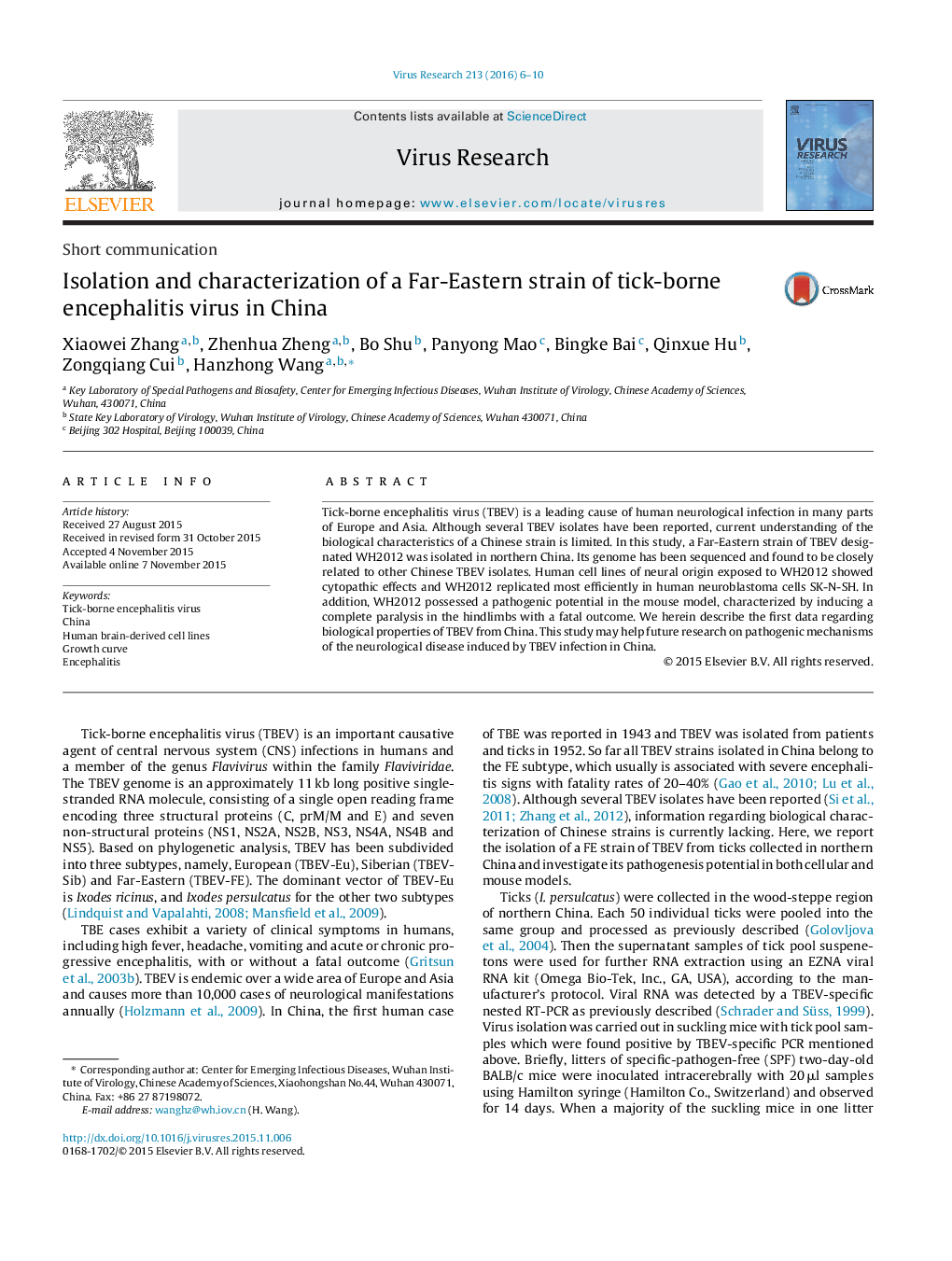| Article ID | Journal | Published Year | Pages | File Type |
|---|---|---|---|---|
| 3427889 | Virus Research | 2016 | 5 Pages |
•A novel TBEV strain (WH2012) was isolated from northern China and its full-length genome was sequenced.•WH2012 was capable of inducing cytopathic effects in human brain-derived cell lines of three origins.•WH2012 replicated most efficiently in human neuroblastoma cells SK-N-SH.•Intracerebral inoculation of virus led to complete paralysis in the hindlimbs and 100% mortality in mice.
Tick-borne encephalitis virus (TBEV) is a leading cause of human neurological infection in many parts of Europe and Asia. Although several TBEV isolates have been reported, current understanding of the biological characteristics of a Chinese strain is limited. In this study, a Far-Eastern strain of TBEV designated WH2012 was isolated in northern China. Its genome has been sequenced and found to be closely related to other Chinese TBEV isolates. Human cell lines of neural origin exposed to WH2012 showed cytopathic effects and WH2012 replicated most efficiently in human neuroblastoma cells SK-N-SH. In addition, WH2012 possessed a pathogenic potential in the mouse model, characterized by inducing a complete paralysis in the hindlimbs with a fatal outcome. We herein describe the first data regarding biological properties of TBEV from China. This study may help future research on pathogenic mechanisms of the neurological disease induced by TBEV infection in China.
